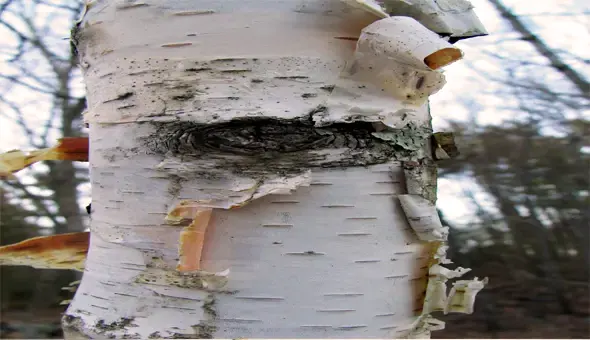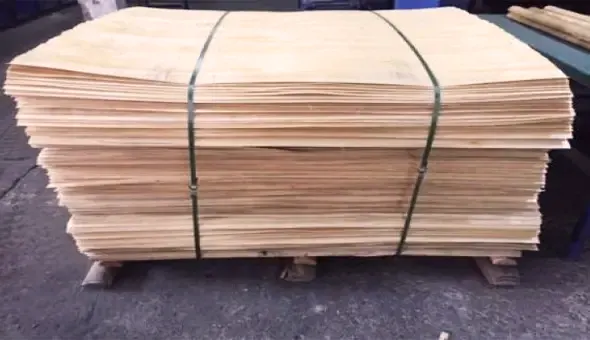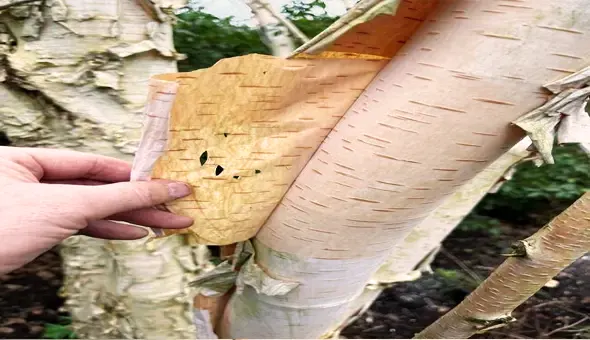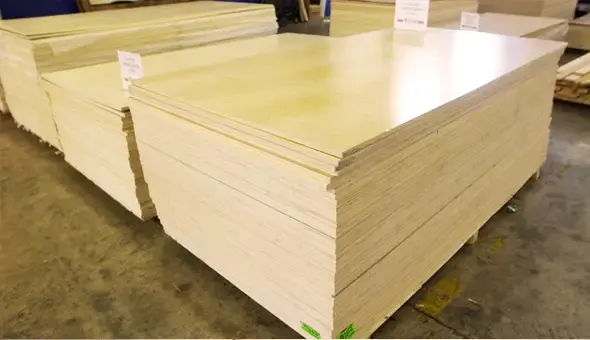Paper Birch Lumber
- July 27, 2023
- 0 comment
Paper Birch lumber is obtained from the Paper Birch tree, scientifically known as Betula papyrifera. This particular species of tree is highly prized for its lightweight nature and visually appealing appearance, making it a sought-after option for a wide range of woodworking projects and interior applications.

The wood’s pale white to light reddish-brown color, along with occasional darker streaks and markings, adds to its aesthetic appeal. Its grain is typically straight, with a fine and even texture, contributing to its ease of working and finishing. Due to its soft and workable characteristics, Paper Birch lumber is favored by craftsmen and DIY enthusiasts alike. It can be easily machined, glued, and takes nails and screws without much difficulty.
While its strength characteristics are decent, Paper Birch is mainly used for non-structural purposes, such as furniture, cabinetry, interior millwork, turned items, and veneer. Additionally, its light weight and other qualities make it a popular choice for constructing canoes, giving rise to one of its common names, “Canoe Birch.” However, it is important to note that Paper Birch is not naturally resistant to decay, and therefore, it is recommended for indoor or protected use to avoid exposure to moisture and the elements. Overall, Paper Birch lumber stands as a reliable and accessible choice for numerous projects where its pleasing appearance and workability come into play.
| Common Name(s) | Paper Birch, White Birch, Canoe Birch |
|---|---|
| Scientific Name | Betula papyrifera |
| Distribution | Native to North America; found in Canada and northern US |
| Tree Size | Height: 50-70 feet (15-21 meters); Diameter: 1-2 feet (30-60 cm) |
| Avg. Dried Weight | 26 lbs/ft^3 (420 kg/m^3) |
| Specific Gravity | 0.42 |
| Janka Hardness | 910 lbf (4,050 N) |
| Modulus of Rupture | 14,600 lbf/in^2 (100.7 MPa) |
| Elastic Modulus | 1,830,000 lbf/in^2 (12.62 GPa) |
| Crushing Strength | 7,900 lbf/in^2 (54.5 MPa) |
| Shrinkage | Radial: 4.4%, Tangential: 8.4%, Volumetric: 12.8% |
Characteristics
Color/Appearance
Paper Birch lumber exhibits a beautiful range of colors, typically ranging from pale white to light reddish-brown. This variation in hue gives the wood a warm and inviting appearance. Additionally, occasional darker streaks and markings may be present, enhancing the wood’s natural charm. Notably, the heartwood and sapwood of Paper Birch are not easily distinguishable, resulting in a consistent overall look when the lumber is used in various applications.


Grain/Texture
The grain of Paper Birch lumber is a standout feature, characterized by its straight pattern. This straight grain adds to the wood’s clean and uniform appearance, making it an excellent choice for projects where a smooth, sleek look is desired. The fine and even texture of the wood further contributes to its appeal, allowing for a polished and refined finish when worked with various tools.
Rot Resistance
One of the limitations of Paper Birch lumber lies in its susceptibility to decay when exposed to moisture and the elements. As it is not naturally resistant to rot, it is crucial to apply appropriate coatings or limit its use to indoor applications to ensure the wood’s longevity and prevent deterioration.
Workability
Paper Birch stands out for its exceptional workability, primarily due to its soft nature. This softness makes it relatively easy to machine, allowing for smooth cuts and shaping during woodworking projects. The wood also takes to gluing with ease, ensuring strong and secure bonds. Additionally, it readily accepts nails and screws, simplifying construction processes. However, woodworkers should exercise caution to avoid splintering while working with hand tools, as the softness may make it prone to such issues.
Odor
A notable advantage of Paper Birch lumber is its lack of characteristic odor. This feature makes it an ideal choice for projects where avoiding strong smells or fragrances is desired, ensuring a pleasant woodworking experience.
Allergies/Toxicity
While Paper Birch is generally considered non-toxic, it’s essential to be cautious when working with any lumber to minimize exposure to wood dust. Some individuals may be sensitive to wood dust from any species, so proper safety equipment, such as dust masks and protective eyewear, should be used to prevent potential allergic reactions.
Pricing/Availability
Paper Birch lumber is readily available and falls within the mid-range category in terms of pricing. Its cost may vary based on regional availability and demand, but it is generally considered an affordable option for various woodworking projects.
Sustainability
Paper Birch is considered a sustainable species, primarily due to its widespread distribution in North America and the implementation of managed forestry practices. Responsible harvesting and replanting efforts ensure a continuous supply of Paper Birch lumber. When purchasing Paper Birch products, looking for certifications from reputable organizations like the Forest Stewardship Council (FSC) further assures responsible sourcing.


Common Use
Paper Birch lumber finds versatile applications in various woodworking projects. Its attractive appearance, workability, and moderate strength make it suitable for crafting furniture, cabinets, veneers, plywood, turned objects, and interior millwork. It is a popular choice among artisans and woodworkers who seek a reliable, visually appealing, and easy-to-work-with hardwood for their creations. Whether for elegant furniture pieces or intricate decorative items, Paper Birch’s qualities make it a go-to wood for a wide range of projects.
Frequently Asked Questions
- Is Paper Birch lumber suitable for outdoor projects?
Paper Birch is not naturally durable against decay and should be used indoors or in protected areas to avoid moisture exposure. - Can Paper Birch be stained or finished easily?
Yes, Paper Birch takes stains and finishes well, offering various color options for your projects. - Is Paper Birch lumber strong enough for structural applications?
While it has decent strength characteristics, Paper Birch is primarily used for non-structural purposes due to its relatively low density and softer nature. - Where can I buy Paper Birch lumber?
Paper Birch lumber is available at most lumberyards, home improvement stores, and specialty wood suppliers. - Does Paper Birch lumber emit any strong odors during use?
No, Paper Birch is odorless, making it ideal for projects where strong smells are undesirable. - Is Paper Birch sustainable and environmentally friendly?
Yes, Paper Birch is considered sustainable when harvested responsibly from managed forests. Look for certified sources for assurance. - Can I use Paper Birch lumber for making musical instruments?
While Paper Birch is lightweight and can be used for some instrument parts, it may not be the best choice for high-end instruments that require specific tonal qualities.
We’re eager to hear from you! Please take a moment to share your personal experiences and thoughts about Paper Birch lumber in the comments section below. Your insights could be a valuable resource, assisting fellow woodworkers and enthusiasts in making well-informed decisions when working with this unique wood!










Leave your comment